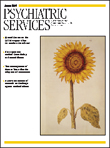Clinicians working with addictions are challenged by the prevalence of relapse. When seeking guidance, they look to Alan Marlatt and Dennis Donovan for their wisdom. Relapse Prevention offers clinicians a comprehensive update of the science and how it has been applied to major areas of addictive disorders.
The opening chapter, by Marlatt and Katie Witkiewitz, provides a broad overview of relapse prevention for drugs and alcohol and special treatment considerations. It summarizes the models of relapse, the effectiveness and efficacy of relapse prevention, the Relapse Replication and Extension Project, and the intrapersonal and interpersonal determinants of relapse. The newest and most exciting section explores future directions in the definition, measurement, and treatment of relapse. Marlatt and Witkiewitz reconceptualize relapse as a dynamic process, expanding on Marlatt and Gordon's cognitive-behavioral model. This new model incorporates distal risk factors, such as years of dependence, family history, supports, and comorbid psychopathology, with cognitive processes—self-efficacy, outcome expectancies, craving AVE, and motivation—and cognitive and behavioral coping skills. They propose a reciprocal causation or feedback loop that allows for the interaction between coping skills, cognitions, affect, and substance use behavior. This reconceptualization of relapse addresses the complexity and unpredictability of substance use behavior.
Eleven chapters written by experts who address cutting-edge relapse prevention science and practice in their respective fields follow the first chapter. Topics include diverse populations, alcohol, smoking, stimulants, opioids, cannabis, club drugs, hallucinogens, inhalants, and steroids. Other chapters cover eating disorders and obesity, gambling, sexual offenders, and high-risk sexual behaviors. Each chapter offers a comprehensive review of the literature and empirical data where applicable. In addition, the experts attempt to address and apply the conventional wisdom of models of relapse prevention and areas for future study.
This is not a book that lends itself readily to reading cover-to-cover, but it is a must-have resource for both seasoned clinicians and researchers. The numerous citations can distract the reader from the salient points, but the reader will find it a worthwhile endeavor. The book represents the next step in the evolution of understanding the complexity of relapse which is common for patients struggling to manage chemical and nonchemical addictive behaviors.

